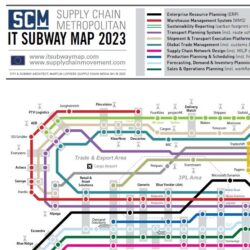Checklist for Inventory Visibility

Visibility and control are vital in inventory management. A study by McKinsey reveals that 77% of companies are extensively investing in this area. In response to market uncertainty, companies have increased their inventory levels in recent years, and moved the stock to forward stocking locations positioned closer to customers. However, this new reality has brought a new set of challenges as these locations are beyond the reach of existing warehouse management systems.
Effective inventory management is critical for success in various industries, especially when dealing with high-value goods, spare parts or consignment stock. Regular cycle counts are crucial for inventory accuracy, but manual processes can be time-consuming and disruptive to warehouse operations.
Remote locations
Digital tools play a key role in improving visibility and control across multiple – and sometimes remote – locations. They enable accurate monitoring of product lifecycles, expiration dates and demand patterns, facilitating proactive identification of obsolete inventory. This prevents inventory writeoffs, reduces storage costs and optimizes inventory utilization.
Adopting a hardware-agnostic approach and leveraging multi-barcode scanning capabilities extends the use of existing devices while streamlining data capture, eliminating errors and enhancing inventory accuracy. Integrating inventory management systems with existing enterprise resource planning (ERP) or warehouse management systems ensures seamless data flow, eliminates data silos and maximizes IT investments.
Download the Checklist for Inventory Visibility
Inventory software vendor Ventory and Supply Chain Movement have drawn up a checklist to measure the maturity of your current systems. Answer these 10 questions and find out whether the visibility of your stock locations is below par, reasonable or optimal.
Find more checklists of Supply Chain Movement here >>










